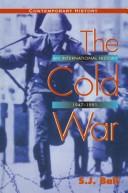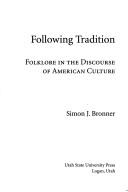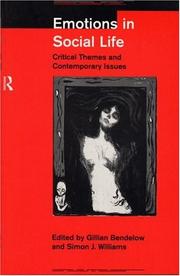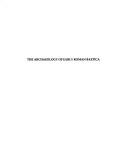| Listing 1 - 9 of 9 |
Sort by
|
Book
ISBN: 9062571565 Year: 1998 Publisher: Amsterdam De Boog
Abstract | Keywords | Export | Availability | Bookmark
 Loading...
Loading...Choose an application
- Reference Manager
- EndNote
- RefWorks (Direct export to RefWorks)

ISBN: 0340591684 0340645466 Year: 1998 Volume: *3 Publisher: London Arnold
Abstract | Keywords | Export | Availability | Bookmark
 Loading...
Loading...Choose an application
- Reference Manager
- EndNote
- RefWorks (Direct export to RefWorks)
World history --- anno 1940-1949 --- anno 1980-1989 --- anno 1960-1969 --- anno 1950-1959 --- anno 1970-1979 --- Cold War --- Guerre froide --- Koude oorlog --- Oorlog [Koude ] --- World politics --- Cold War. --- Politique mondiale --- United States --- Soviet Union --- Etats-Unis --- URSS --- Foreign relations --- Relations extérieures --- Relations extérieures --- 1945 --- -Cold War

ISBN: 0874212391 9786613077943 0874213649 1283077949 0585033676 9780874213645 9780585033679 9780874212396 9781283077941 0874216419 9780874216417 Year: 1998 Publisher: Logan Utah State university press
Abstract | Keywords | Export | Availability | Bookmark
 Loading...
Loading...Choose an application
- Reference Manager
- EndNote
- RefWorks (Direct export to RefWorks)
Following Tradition is an expansive examination of the history of tradition—"one of the most common as well as most contested terms in English language usage"—in Americans' thinking and discourse about culture. Tradition in use becomes problematic because of "its multiple meanings and its conceptual softness." As a term and a concept, it has been important in the development of all scholarly fields that study American culture. Folklore, history, American studies, anthropology, cultural studies, and others assign different value and meaning to tradition. It is a frequent point of reference in popular discourse concerning everything from politics to lifestyles to sports and entertainment. Politicians and social advocates appeal to it as prima facie evidence of the worth of their causes. Entertainment and other media mass produce it, or at least a facsimile of it. In a society that frequently seeks to reinvent itself, tradition as a cultural anchor to be reverenced or rejected is an essential, if elusive, concept. Simon Bronner's wide net captures the historical, rhetorical, philosophical, and psychological dimensions of tradition. As he notes, he has written a book "about an American tradition—arguing about it." His elucidation of those arguments makes fascinating and thoughtful reading. An essential text for folklorists, Following Tradition will be a valuable reference as well for historians and anthropologists; students of American studies, popular culture, and cultural studies; and anyone interested in the continuing place of tradition in American culture.
Folklore --- History of North America --- History of civilization --- Folklore -- United States -- History. --- Folklore -- United States. --- Oral tradition -- United States -- History. --- Oral tradition -- United States. --- United States -- Social life and customs. --- Oral tradition --- Anthropology --- Social Sciences --- -Oral tradition --- -Tradition, Oral --- Oral communication --- Oral history --- Folk beliefs --- Folk-lore --- Traditions --- Ethnology --- Manners and customs --- Material culture --- Mythology --- Storytelling --- United States --- Social life and customs. --- -United States --- Folk-lore, American
Book
ISBN: 0850925614 9780850925616 Year: 1998 Publisher: London : Commonwealth Secretariat,
Abstract | Keywords | Export | Availability | Bookmark
 Loading...
Loading...Choose an application
- Reference Manager
- EndNote
- RefWorks (Direct export to RefWorks)
Book
Year: 1998 Publisher: Cambridge, Mass. National Bureau of Economic Research
Abstract | Keywords | Export | Availability | Bookmark
 Loading...
Loading...Choose an application
- Reference Manager
- EndNote
- RefWorks (Direct export to RefWorks)

ISBN: 0415137985 0415137993 Year: 1998 Publisher: New York Routledge
Abstract | Keywords | Export | Availability | Bookmark
 Loading...
Loading...Choose an application
- Reference Manager
- EndNote
- RefWorks (Direct export to RefWorks)
ro: ed. by --- Psychology, Social --- Emotions --- Social psychology --- Social medicine. --- Sex --- Psychologie sociale --- Médecine sociale --- Sexualité --- Sociological aspects. --- Philosophy. --- Aspect sociologique --- Philosophie --- Social medicine --- Sociological aspects --- Philosophy --- Psychology, Social. --- Mass psychology --- Human ecology --- Psychology --- Social groups --- Sociology --- Medical care --- Medical sociology --- Medicine --- Medicine, Social --- Public health --- Public welfare --- Medical ethics --- Medical sociologists --- Sociology of emotions --- Social aspects

ISBN: 3540762221 Year: 1998 Publisher: London : Springer,
Abstract | Keywords | Export | Availability | Bookmark
 Loading...
Loading...Choose an application
- Reference Manager
- EndNote
- RefWorks (Direct export to RefWorks)
Sound recordings --- Sound --- Conservation and restoration. --- Recording and reproducing --- Digital techniques.
Book
Year: 1998 Publisher: Cambridge, Mass. National Bureau of Economic Research
Abstract | Keywords | Export | Availability | Bookmark
 Loading...
Loading...Choose an application
- Reference Manager
- EndNote
- RefWorks (Direct export to RefWorks)
We analyze two main theories of international trade, the Heckscher-Ohlin theory and the Increasing Returns trade theory, by examining whether they can account for the empirical success of the so-called Gravity Equation. Since versions of both models can generate this prediction, we tackle the model identification problem by conditioning bilateral trade relations on factor endowment differences and the share of intra-industry trade, because only for large factor endowment differences does the Heckscher-Ohlin model generate specialization of production and the Gravity Equation, and it predicts inter-, not intra-industry trade. There are three major findings: First, little production is perfectly specialized due to factor endowment differences, making the perfect specialization version of the Heckscher-Ohlin model an unlikely candidate to explain the empirical success of the Gravity Equation. Second, increasing returns are important causes for perfect product specialization and the Gravity Equation, especially among industrialized countries. Third, to the extent that production is not perfectly specialized across countries, we find support for both Heckscher-Ohlin and Increasing Returns models. Based on these findings, we argue that both models explain different components of the international variation of production patterns and trade volumes, with important implications for productivity growth, labor and macroeconomics.

ISBN: 1887829296 Year: 1998 Volume: 29 *2 Publisher: Portsmouth (Rhode Island) : Journal of Roman Archaeology,
Abstract | Keywords | Export | Availability | Bookmark
 Loading...
Loading...Choose an application
- Reference Manager
- EndNote
- RefWorks (Direct export to RefWorks)
Romans --- Excavations (Archaeology) --- Romains --- Andalusia (Spain) --- Andalousie (Espagne) --- Espagne --- History --- Antiquities, Roman --- Antiquités romaines --- Histoire --- Antiquités romaines.
| Listing 1 - 9 of 9 |
Sort by
|

 Search
Search Feedback
Feedback About UniCat
About UniCat  Help
Help News
News